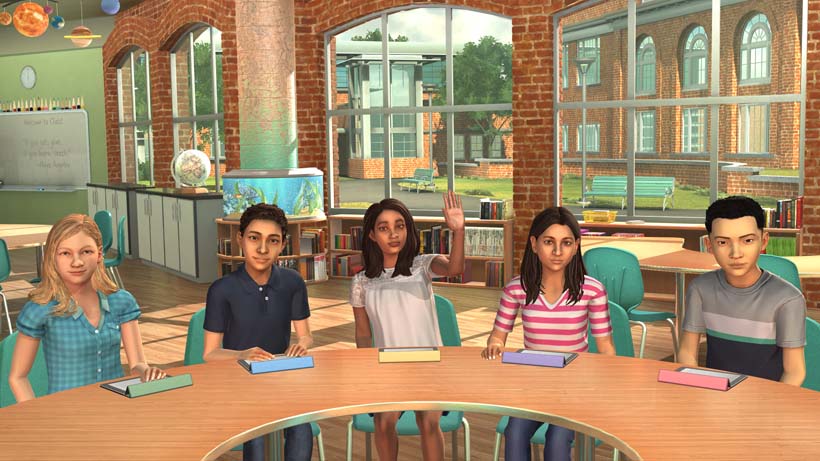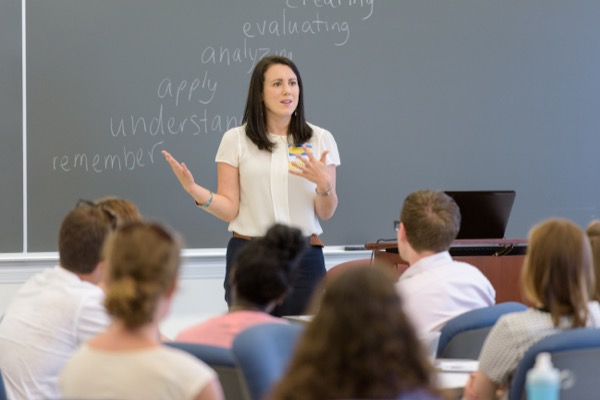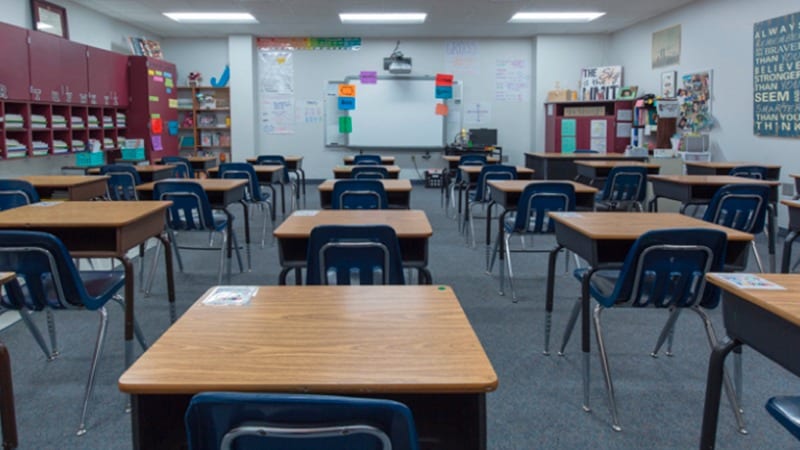Teaching Reflection #1

Reflecting on: First Mursion Lesson
Mursion Lesson: is an interactive lesson with online students who are digital.
Who knew teaching student avatars would be harder than actual students. The experience of teaching a mini-lesson for student avatars was a challenge. It was different than teaching in an actual classroom because the avatars are animated. Using technology versus actual students changes a lot. Although the student avatars did things and said things that real students do, it is different because once you are in a classroom with your students and build a relationship they do not tend to act out as much.
First, I realized that getting the attention of virtual students is harder than getting the attention of actual students. But I did learn a new skill that I will not only use in my next lesson but in the real classroom. After viewing my video, the first thing I noticed was my lack of introduction. I was already flustered and confused from trying to get the students attending that it threw me off track and I started rushing.
My original plan was to introduce myself and set guidelines before starting on the lesson. One student tried began asking if I wanted to know about her weekend and then stated that if I didn’t, why did I ask, which is a fair question. With this being a mini-lesson, it makes it hard to establish a relationship. If this was my class and I had more than 5 minutes I would ask and want to know about their weekend. This is what sets virtual students and actual students apart.
There was also another conversation about me “picking” on them because of my wording. Student engagement was low, the only student who mostly participated was Ethan. My peer reviewer, Hollyanne, noticed that Savannah had her head down for a good amount of the lesson. I did not notice this, even when I re-watched my lesson. In fact, I had to re-watch it again. Hollyanne also noticed that Ethan was the only participant in my lesson.
To continue, student behavior was better than I expected yet, it still surprised me. In Hollyanne’s video, there was a side conversation about Ghostbusters, however, I did not really notice any in mine. There was some incoherent whispering, but I didn’t really notice it or put an end to it as I should have. There were some interruptions and I think I did an okay job of continuing through the lesson.
Hollyanne’s advice for future lesson included introducing myself and making the attempt to make a connection. I take her suggestions as they are and agree completely. In the future, I plan to make many adjustments. I want to do the same lesson but improve on it. Next lesson, I will make sure to introduce myself set guidelines first and foremost (and quickly). Next time around, I also know how to get their attention, so I won’t get flustered again.
Lastly, instead of asking the same question multiple times I ask it once, maybe twice before moving forward with the lesson. I will also pay attention to the students more to make sure all the students are listening and paying attention to the lesson. I will also focus on the screen on the laptop instead of trying to look at both the large screen and the laptop because that also threw me off a lot. It was hard to see who was speaking and who was raising their hand. I will hope that more of the students will participate instead of just one, but I am not sure how I could make that happen.
Creating a five-minute lesson is not easy. There is a lot of planning and prepping to do even though it is very short. Depending on what you are teaching you may have to condense some of the information and you might not be able to review everything. I chose to do a mini lesson on nouns because I figured it was easy enough that students of middle school and high school level could grasp quickly. Now that I have done this lesson once and kind of know what to expect, I am looking forward to the next lesson and hope I can do a better job (and that I am more confident). Hopefully, the next lesson runs smoother than my first one.
Teaching Reflection #2

Reflection on: Second Mursion Lesson
Teaching student avatars have been a challenge, but great practice for the future. Although you have less time with the avatar students the impact is the same. In a real classroom, the teacher gets to learn their students and understand how they work. With avatar students it is randomized and even though they behave like real students, it is still different than being in the classroom. This time around, I felt a little more prepared in terms of my material and knowing what to expect with the avatars. The main thing I noticed that was different than the first lesson was the student behavior. There were a lot more comments and distractions during this lesson, however, I learned from the first lesson how to get their attention.
To begin, although I went straight into the rules, unlike the first lesson, I did not fully get into the rules and procedures as I wanted to. I had a spiel of rules and procedures I wanted to go over, but I skipped right past them. I do acknowledge that I did not ask them to raise their hands at the beginning and they did so without being asked to do so. When they did not, however, I asked them to raise their hands which on my side was probably not the best idea since I did not emphasize that at the beginning of the lesson. Instead, I felt that I should have rolled with the punches on that and allowed them to answer and then ask that next time they raised their hand. In the video, Dev gave an answer to a question and then I asked him to raise his hand and answer, but he said he already answered it.
Furthermore, there are small things you don’t notice when you are teaching because it is one teacher to about 20 students. You are so wrapped up in teaching the lesson that you can’t pinpoint one or two students when they are looking down at their phone or whispering to another student. Maybe it is something you pick up over the years but even with five students on a screen, it is hard to spot a student out of focus or not engaging. I attempted to keep student engagement by doing two different mini-lessons in the five minutes I had to teach the lesson. I also wanted to do a think, pair, share where the student’s look around the classroom and give examples of nouns they see in the room, but that was forgotten in the span of time because I was rushing.
There was more student engagement during this lesson than the first. In the first lesson the students seemed less interested and, in this lesson, they seemed a little more eager and ready to learn. Josh mentioned that the students seemed somewhat uninterested but that is their job as students. In comparison to the first lesson, I think they were more active and ready to answer. There were also a lot more distractions this time around. The students asked and commented about a lot of off topic things. A phone rang once, and I did not hear it until I re-watched the video a second time. Josh pointed out that Dev was texting at about 1:30 in and I did not notice that at all, even during the re-watch.
For future lessons, I plan to be fully versed and prepared to deliver rules and procedures. I would like to make it a point to look out for students not engaging and/or using their phones instead of paying attention to the lesson. Josh’s advice for future lessons included asking students more questions. He would have liked to have seen me ask more questions about proper nouns. I agree because this will help the students clarify and understand the difference between proper and common nouns. I also recognize that I didn’t introduce myself in this lesson either and this is something that sometimes I don’t do when I first head into a classroom to substitute. Sometimes students will ask, other times they do not really care.
To conclude, I really enjoyed these mini-lessons with these student avatars. It is the first time in my college career that I have done something like this. Being recorded also helped me look back at things I did wrong and things I can work on in the future. Unfortunately, when in an actual classroom I won’t be able to record myself and re-watch the lesson to pick out what things can be changed. These lessons have been a great experience and learning point for me.
Teaching Reflection #3

Reflection on: experience in the classroom in front of real students.
It is safe to say that educators have one of the hardest professions to date. That is not to say that doctors, firefighters and those that serve this country do not have challenging positions, but educators have so much on their place. Not only do educators have to create lesson plans and educate the future generations, but they also have to be another parental figure, they must record data and have great communication skills along with so much more. It is physically and mentally exhausting especially since teachers must be aware of so much as well as learn and bond with their students. It is disappointing that educators aren’t appreciated for everything they do but I can only hope that maybe one day we will.
To continue, this mini-lesson was a bit of a mess considering the communication between both myself and the teacher I was working with wasn’t the strongest. I did not hear back from Ms. Sneddon until a week later. Initially, I emailed her the day before Thanksgiving and didn’t hear back till the following Wednesday. I did not have a lesson made or anything prepared, so in our exchange, Ms. Sneddon explained to me what her class was currently on summative essay’s. We concluded that I could do a mini-lesson on conclusion paragraphs as it would follow along greatly with her lessons. On Pinterest, I found a list of 10 ways to end an essay, some of the suggestions ending with a question, leaving the readers with your thought, and many more. This is what I decided to base my mini lesson on.
Ms. Sneddon’s class was very respectful. I didn’t feel that I needed to ask them to silence their phones like the avatars because they were already in a school setting, so it was already established. I did ask that they raise their hands if they had any questions or comments. The class was very attentive and prepared to learn and I got nervous. I started by asking the students if they knew what a conclusion was, just a broad question. I was hoping for a broad answer, so I could discuss maybe conclusions of books or movies before relating it to the conclusion of a summative essay. Instead, the students replied with the ending of a paragraph, which they were not incorrect, but I was prepared for a different answer. So, I adjusted and continued. I went over what a conclusion is then I spoke about the structure of an essay, the introduction, body and finally conclusion.
Furthermore, I continued the mini-lesson by having the students read off the list I drew up on poster board. We went through the list and then I asked if anyone had any questions. I left the list with Ms. Sneddon so that she could use it for future lessons. Being a guest teacher in a classroom with actual students is a different experience than presenting to avatars. Although both are beneficial, I think the real experience starts during your first years of teaching. These are just practices of what to expect, which are great experiences because it helped prepare and further progress ideas and lessons for the future. For future lessons, as I said in other mini lessons I would like to be more prepared and well versed in topics I would be covering. I would have also have liked to do a hands-on activity or a discussion on a conclusion.
To conclude, both mini-lessons with the avatars and in the actual classroom were great experiences. I have never done either, so I enjoyed it. As a substitute, I don’t create the lesson plans, I just go in and follow the teacher’s instructions. So, while I do get some classroom management experience, I don’t get any experience in creating lessons. In prior classes, I have written lesson plans but never got present it in a classroom. It was great to get the experience of both because as I get closer to my degree, I will need the experience. Lastly, I would have liked to see and discuss with my classmates about their mini-lesson and experience in the classroom. As educators, we learn a lot from not only our students but also our colleagues.